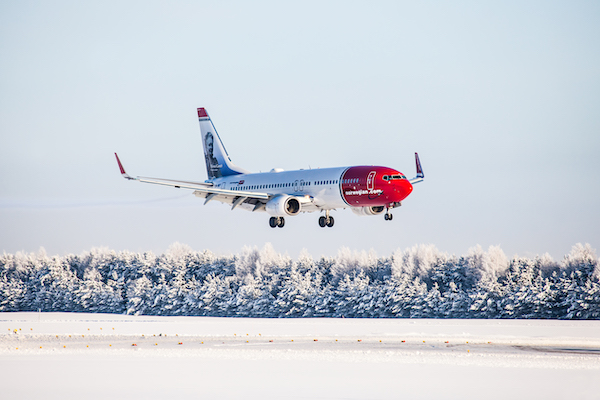Norwegian Air’s operational efficiency encountered significant disruptions this January, primarily due to severe winter weather conditions. A striking 23.3% of flights were delayed, marking a challenging month for the airline.
Despite these hurdles, Norwegian Air maintained a strong operational presence, with more than 1.1 million passengers carried and its regional arm, Widerøe, contributing a substantial number of flights. The airline’s strategic efforts ensured minimal disruptions to its service.
The severe weather conditions in January significantly impacted the punctuality of Norwegian Air’s flights. Less than three-quarters of the airline’s flights managed to depart within 15 minutes of their scheduled times. This shortfall in punctuality highlights the challenges airlines face during harsh winter months. Severe winter storms added to the difficulty, affecting various aspects of flight operations.
Norwegian Air operated an average of 63 aircraft during this period. The strategic management of resources helped mitigate the impact of weather-related disruptions, although challenges remained. This was a testament to the operational strategies put in place by the airline’s management.
The demand for flights to beach destinations remained robust, aligning well with the company’s forecasts. Many passengers opted for the Mediterranean, seeking respite from the harsh Nordic winter.
Karlsen recognised the significant role of staff in managing weather-related challenges, thereby retaining customer trust and satisfaction. This commitment reflects the resilience of Norwegian Air’s operational framework.
Incorporating Widerøe’s operations reflects a significant stride towards achieving an expansive service network, aligning with Norwegian Air’s long-term growth objectives.
Such improvements in load factor highlight the effective management of seat inventory and strategic capacity adjustments based on market demand.
The severe weather in January posed substantial challenges for Norwegian Air, affecting punctuality and operational flow. Despite this, strategic measures and employee efforts ensured the airline continued to deliver services effectively. Looking forward, the incorporation of Widerøe and refined fuel strategies position Norwegian Air well for future growth.
In summary, Norwegian Air faced considerable obstacles due to inclement winter weather but continued to carry millions of passengers. The integration of Widerøe and strategic operations underscore the carrier’s resilience and adaptability.
Ultimately, such efforts not only minimized disruptions but also positioned the airline for continued success. The future seems positive for Norwegian Air, as it navigates challenges with a focus on strategic growth and operational efficiency.

